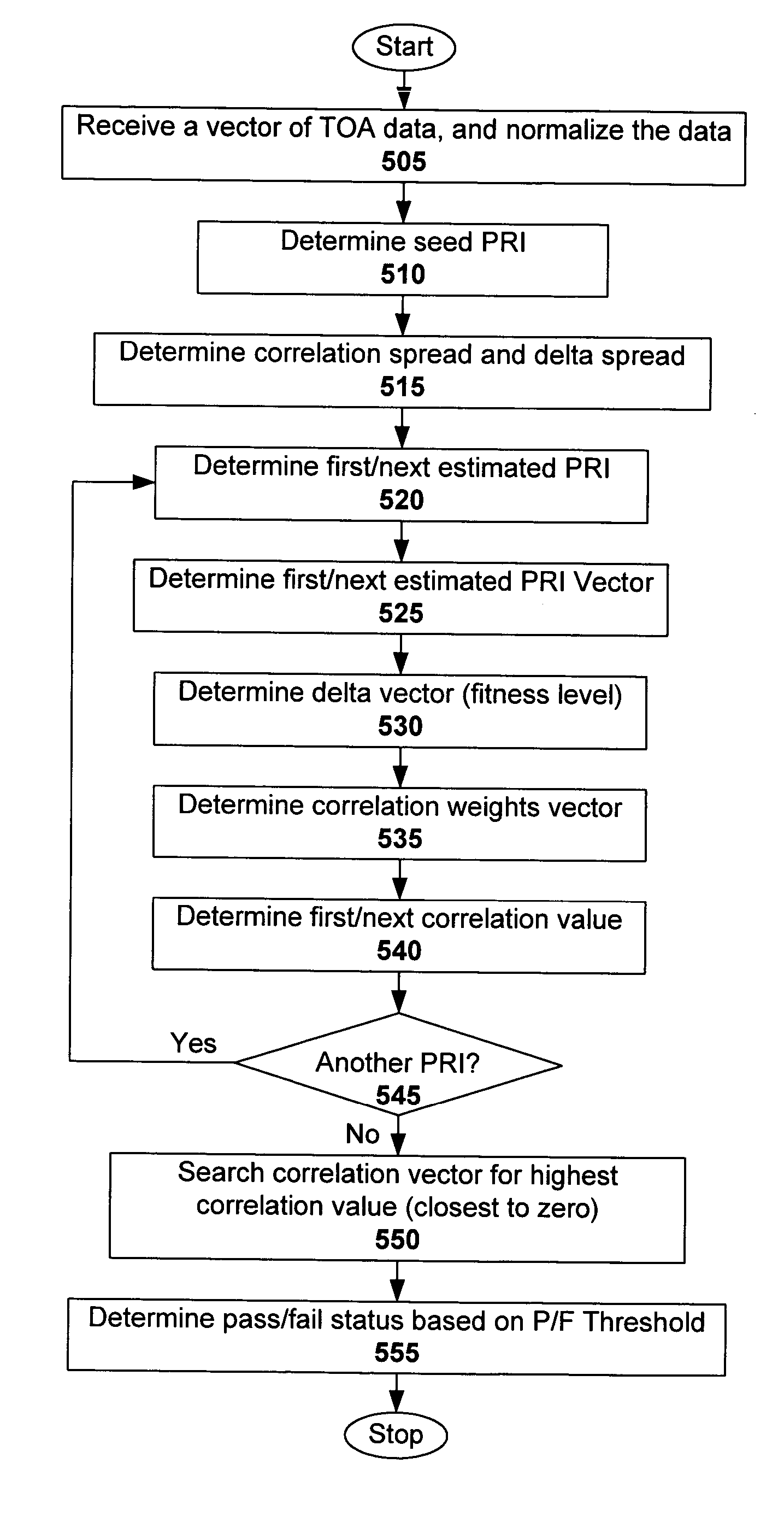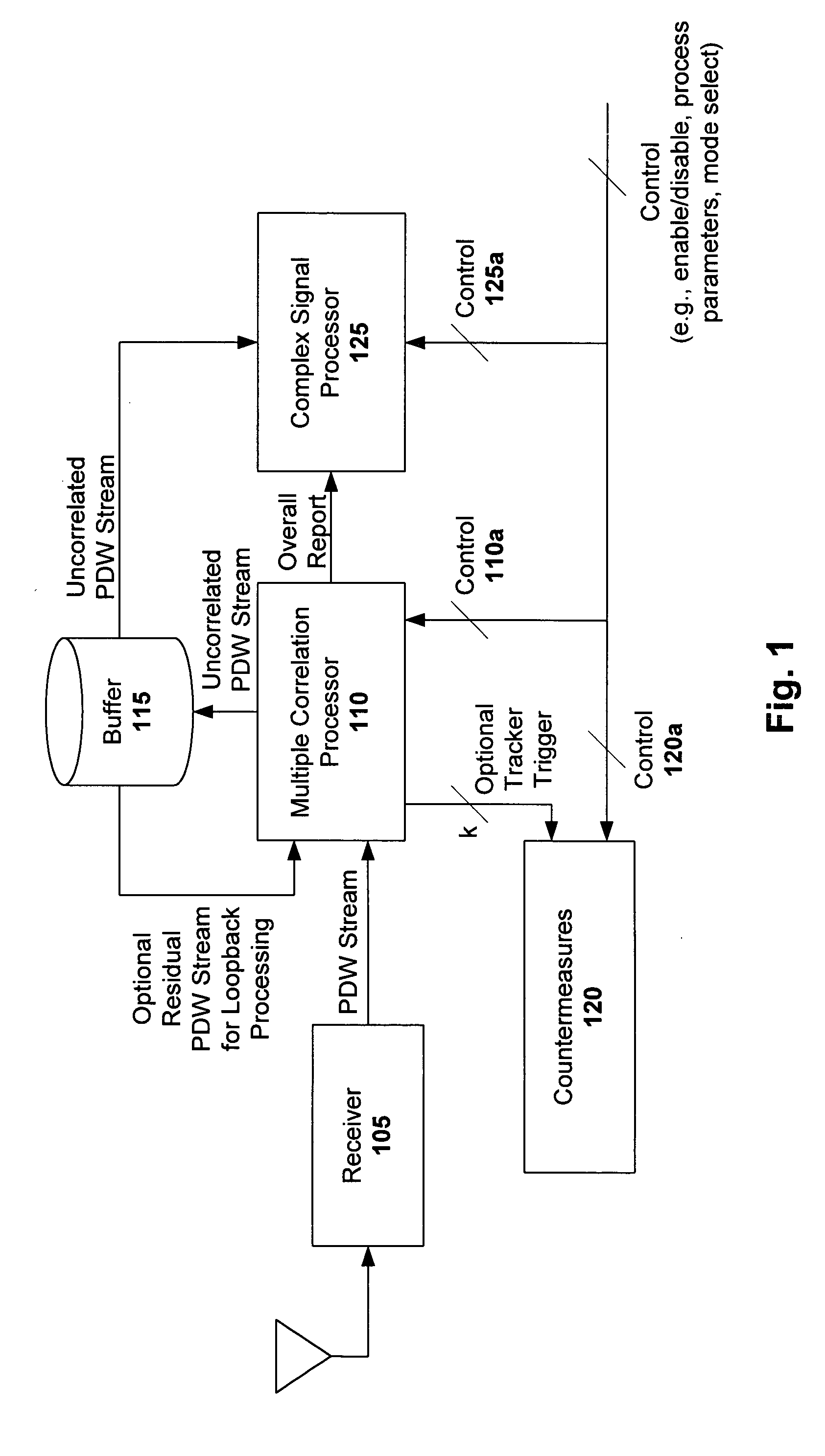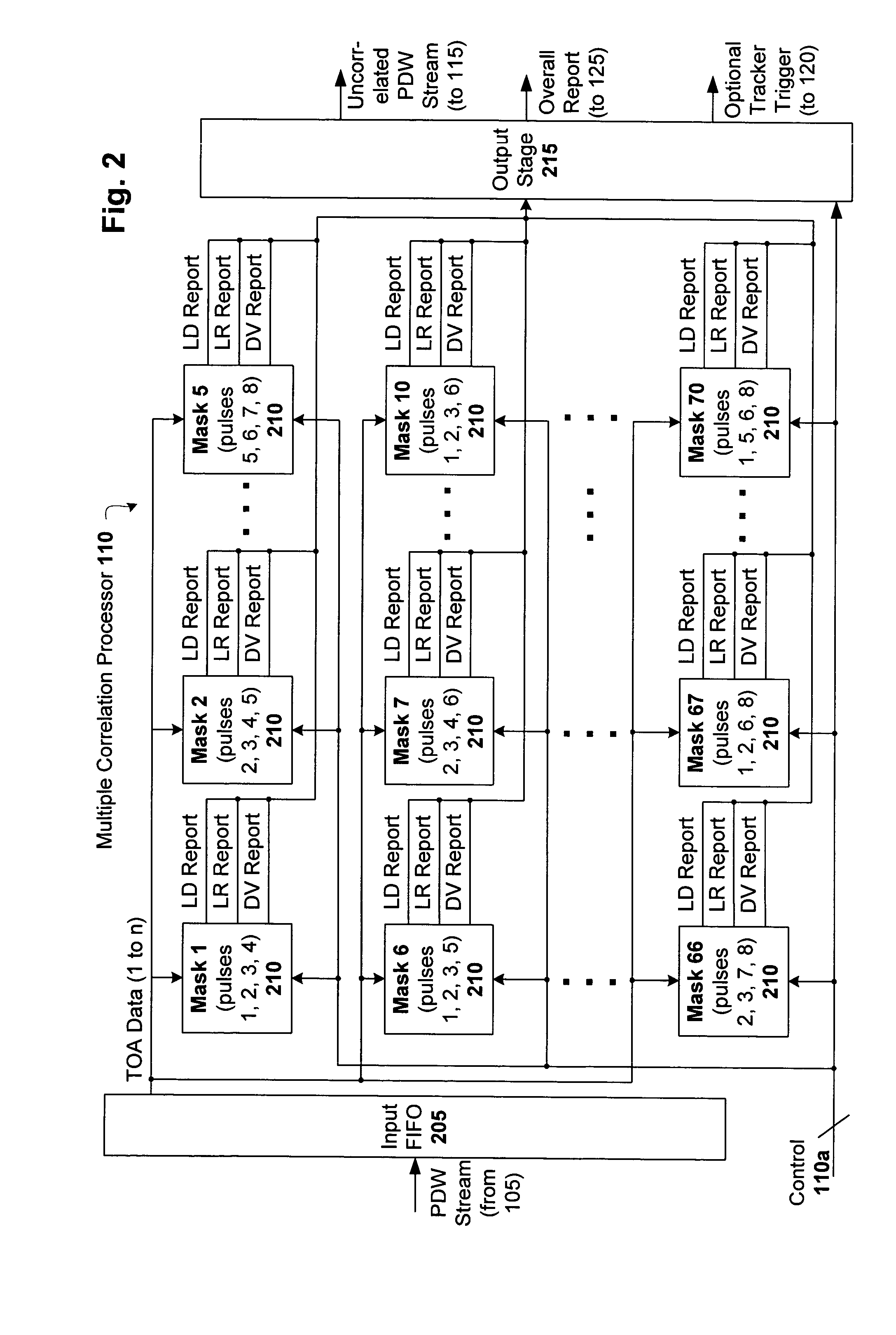Detection and identification of stable PRI patterns using multiple parallel hypothesis correlation algorithms
a correlation algorithm and pri pattern technology, applied in the field of communication, can solve the problems of relatively high overall latency of detecting and reporting the presence of all emitters, and the execution time of conventional techniques is relatively slow, so as to achieve significant reduction of downstream computational processing
- Summary
- Abstract
- Description
- Claims
- Application Information
AI Technical Summary
Benefits of technology
Problems solved by technology
Method used
Image
Examples
Embodiment Construction
[0031] Embodiments of the present invention operate to significantly speed up the process stable based PRI signals included in the received data stream are detected, reported, and filtered out. The remaining signals (e.g., complex PRI signal types and unusual PRI phenomenon) of the received data stream are buffered, thereby forming a reduced set of input signals. This reduced set of signals can then be processed by conventional expert-system based pulse deinterleave and PRI identification algorithms, which are generally slower and more computationally intensive than the stable based algorithms described herein. However, the expert-system based algorithms are enabled to arrive at their conclusions sooner, since they have less overall data and signals to process.
[0032] Detection and identification of stable PRI patterns according to the principles of the present invention can be carried out in a number of ways using multiple parallel hypothesis correlation algorithms. For example, th...
PUM
 Login to View More
Login to View More Abstract
Description
Claims
Application Information
 Login to View More
Login to View More - R&D
- Intellectual Property
- Life Sciences
- Materials
- Tech Scout
- Unparalleled Data Quality
- Higher Quality Content
- 60% Fewer Hallucinations
Browse by: Latest US Patents, China's latest patents, Technical Efficacy Thesaurus, Application Domain, Technology Topic, Popular Technical Reports.
© 2025 PatSnap. All rights reserved.Legal|Privacy policy|Modern Slavery Act Transparency Statement|Sitemap|About US| Contact US: help@patsnap.com



